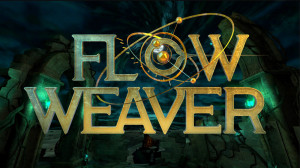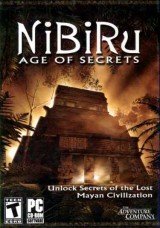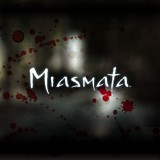Review for Filament

About ten minutes after starting up Beard Envy’s puzzle-centric Filament, I’d pretty much gotten the gist of what it was all about, which is to say a litany of conundrums in rapid succession, all iterating on a similar theme, and seemingly not much else. I shut the game down and, to be honest, barely gave it another thought, let alone summoned the will to give it a second chance. I like puzzlers as much as the next guy, but spatial stuff, particularly when presented over and over, doesn’t rank at the top of my list. So I wasn’t particularly thrilled at the prospect of reviewing the game, as it meant I had to go back and put in the substantial amount of time needed to best every obstacle and see the credits roll. Little did I know at the time how close I’d come to missing out on something truly wonderful.
Now, to give myself at least some credit, I was pretty on the nose with my initial assessment of Filament’s gameplay. If you don’t enjoy pillar-connecting puzzles (or “cable-based puzzles,” as the developers refer to them) then you’ll have a rough go of it. It took me around forty hours or so to solve hundreds of brainteasers (though your mileage will greatly depend on how often you get stuck and how thorough you want to be in sniffing out every last task available), and though you can tackle many of them in any order and switch to another if the current one gets too frustrating, you will need to actually solve the vast majority of them in order to reach the ending. But if you can appreciate its premise, the game will reward you not only with an amazing feeling of accomplishment but also a captivating and emotional narrative that’s as much fun to piece together as any of its actual puzzles.
These puzzles are presented within the framework of exploring a seemingly derelict spaceship. The game takes place in an alternate-reality 1983, one in which mankind has long since embraced space travel, to the point that many humans have now lived their whole lives without ever having seen Earth. You take on the role of Pluto, a spacefarer sent on a salvage mission by the Filament Corporation. The research vessel Alabaster is stranded in orbit around the planetoid Arnold-475M, apparently abandoned by its crew. After boarding the craft, Pluto is contacted by Juniper, the Alabaster’s pilot who turns out to be trapped in its cockpit. In order to release the locks keeping Juniper imprisoned, Pluto must manually deactivate a series of anchors – large monolithic structures scattered all around the Alabaster – by solving the puzzles contained within each of them. While seeking out these anchors, you’ll get to explore the ship as well and uncover the fate of its crew.
Filament controls via a bird’s-eye perspective, with all actions mapped to the WASD and adjacent keys. While the exploration bits offer the opportunity to interact with and examine some select environmental objects as Pluto, puzzles have you take control of a little robot buddy in a room where the exit will only open after a number of pillars are activated. In order to accomplish this, you will have to link the pillars with a cable trailing behind the little guy, tethering him to the wall. The challenge comes in realizing that the cable will effectively cut off your own path if you’re not careful. Once extended, it cannot be crossed back over, meaning that the entire path up to and through the exit must be strategically planned out and accomplished in one continuous trail, with no gaps or intersections along the way. Sounds simple, but the difficulty very quickly ramps up with each new iteration.
But before you throw in the towel completely, there are two factors that greatly help in keeping puzzle burnout to a minimum. For starters, the developers have introduced a hint system since launch that points out the next step of the solution or an existing mistake, should one have been made, and can be used up to two times per puzzle. Very early tasks, containing only three or four pillars, are quickly bested and may be solved in a number of quick permutations. But the lion’s share of challenges have been meticulously designed with only one possible solution; for example, if a stage features a random chunk of wall that could serve as a handy pivot spot, it’s safe to assume it will be needed at some point. There’s a good bit of trial and error required, beginning with which pillar to loop around first, and the shortest path is often not the right one. The hint system, then, is a great addition that will open the game up to a much wider audience, because in practically no time flat the difficulty graduates from tutorial easy to “holy hell, that’s tough as $**t,” with quite a number of rooms that can halt your progress for upwards of half an hour without it.
More important is the impressive amount of variation on the same basic puzzle principle. While all challenges feature the little robot trailing his length of cable back and forth across a room, the specifics receive constant tweaks. Some puzzles feature pillars that must be looped around multiple times in order to activate (keep in mind that the trailing cable makes it impossible to simply circle a pillar over and over again) or pillars that must be engaged in a preset order or in predetermined groups. Some sequences feature color-changing pillars, with the robot acting as a sort of painter’s palette, spreading and mixing the colors to the next pillar to achieve a specific result.
Certain tasks consider different pillar heights, and others have pillars that can’t be activated until other pillars are activated first. Some require passing through laser barriers between pillars, and others involve guiding the cable over certain floor tiles to engage ground switches. Yet another group of conundrums includes pillars that can only be looped from a certain direction, and another with anti-pillars that can’t be touched at all. Some even feature multiple robot buddies, each with its own cable that cannot be contacted by another. The sheer innovation on the same basic concept is commendable, and the importance of being able to break away from any individual type to seek out one of the others to keep things fresh can’t be overstated.
With such focus put on creating a mentally stimulating puzzle experience, one might expect the story to amount to no more than a vague afterthought. However, this is actually where Filament truly captivated and won me over. After each cleared anchor, Juniper delivers a handful of voiced lines, performed by Abigail Turner, very slowly filling you in on what has happened with the Alabaster and its crew. Similarly, a number of rooms aboard the spaceship receive a bit of location-specific commentary from her if Pluto examines certain items within them. For example, observing the crew’s spacesuits prompts her to share a brief anecdote about the common practice of artificial limb augmentations, and visiting the medbay will allow you to learn about Juniper’s brief stint there with appendicitis. There are also key cards that can be found – some as rewards for clearing puzzles, others simply lying about – which, if correctly inputted at a desktop computer terminal via yet another line puzzle, provide access to the text logs of individual crew members.
In these ways you’ll soon become acquainted with all six of the Alabaster’s crew, referred to by color-based codenames. Vermillion, Juniper, Pistachio, Marmalade, Canary and Aubergine gradually start to become fully fleshed-out characters, due in large part to the outstanding writing throughout. Though only Juniper actually gets a speaking role, the character building for each person is nuanced enough that you’ll really feel you’re getting to know them. The story itself, though it easily could have devolved into spooky sci-fi movie clichés, remains quite grounded and serious, with ample time spent on detailing the nature of the research project the crew had been sent on. Even the more mundane day-to-day interactions between them serve a purpose, and are no less entertaining for it. That’s not to say there isn’t a thrilling twist or two as you approach the climax, however, and there are some truly heart-wrenching moments before all is said and done. I don’t know when exactly it happened, but at some point I realized I cared deeply about these six strangers and the fate that had befallen them, and I was desperate to learn the next development in their story.
A huge part of this appeal is down to the game’s presentation of its world. The Alabaster, despite being eerily empty, feels warm and lived in, and you’ll become intimately familiar with not just the locations themselves but the events that transpired there. The environments are just as detailed as the writing, consisting of beautifully depicted living spaces, research labs, workshops, and storage areas. Everywhere you look, signs of life abound – a floaty bobbing around in the pool, a guitar leaning in a corner of the library surrounded by Christmas lights – and it won’t be long before you start to visualize the things you’re reading about in the logs as vividly as any in-game cinematic. For instance, you’ll stumble upon a cozy couch tucked away in a loft and recognize it as Juniper and Pistachio’s Friday Night Movie nook, a safe space where the two were able to bond over shlocky Earth movies, forging secret plans to one day finally visit the planet where they were filmed. Turner also does an amazing job; hearing the affection in her voice when talking about her friends, and her discomfort about later events that she’s still grieving from, provide a tangible reason to care as the story unfurls.
Just as important is the music, a kind of ethereal space pop that is both hauntingly beautiful and heartbreakingly lonely at the same time. It provides a great backdrop when you’re neck-deep in puzzles, but also does a nice job underscoring the drama of what happened here prior to your arrival as you uncover it bit by bit. There aren’t too many tracks, but as you explore more of the Alabaster, new ones are added to the mix. Yes, it gets repetitive, but the score is so good that it ends up being a positive; at its best, it can create a highly relaxing Zen state in which only the ship, its missing crew and its puzzles seem to exist. It’s one of the few soundtracks I would gladly listen to completely apart from the game as beautiful background ambience.
A similar kind of repetition occurs in the way Filament presents large chunks of its narrative. The crew logs you unlock consist largely of email communications back and forth among various crew members (with a few diary-like entries thrown in), meaning that any given exchange will appear at least twice, once for each participant, and email chains in which the entire team participated will appear in logs from all six characters. This means that the more of them you unlock via key cards, the greater the chance of seeing familiar messages over again, though of course you don’t need to reread them once you recognize them as duplicates. But it’s worth taking time to read each original entry as there’s so much pure character-building contained within these files. You’ll learn of Vermillion’s attempts to teach his non-Earthborn colleagues the concept of music, follow the impact of the vessel’s pet cat birthing a litter of kittens mid-mission, and see the crew deal with the consequences of a routine space walk gone disastrously wrong. It’s an engaging and well-written slice of life, and that’s before the story’s main conflict even arises.
Exploring the Alabaster will invariably also disclose a series of enigmatic patterns that can be found in the most unassuming of places. Take a close look at the shower doors in the lavatory, for instance, or carefully study the odd pattern of submerged tiles at the bottom of the pool, and you’ll notice someone may be sending you some subtle messages. For those looking to beef up the quantity of puzzles even further, these environmental clues can be used to log in to computer terminals for some further optional narrative bits, as well as achievements for the completionists out there.
All good things must come to an end, however, and sadly this is the one area where Filament stumbles a bit. First, there’s a sudden, almost soul-crushing difficulty spike (even relative to the already considerable challenge up to that point) in the final area, containing a barrage of the game’s very toughest puzzles, including several one-offs that far outpace anything that came before. Your reward for persevering through so many hours of puzzle solving, punctuated by this maniacal ending gauntlet, is an ending that unfortunately feels just a smidge too vague, not quite satisfying enough to pay off the emotional build-up to that point. It’s a small blemish, but after drawing players in with its story as much as, if not more than, its puzzles throughout, it’s a point worth noting.
Filament is at once a game that delivers precisely what it advertises, in spades, and yet so much more beneath the surface. Next to games like Jonathan Blow’s The Witness, it stands up admirably as a puzzle-thon tour de force, with quite a high challenge threshold and plenty of subtle variety to keep things fresh. However, it also features some absolutely wonderful world-building and narrative elements that are equally worth the price of admission. All of this is coupled with great voice acting, a phenomenal soundtrack and beautiful visuals that make exploring the Alabaster a highlight that can proudly stand shoulder to shoulder with the satisfying gameplay. With challenge and style to spare, Filament is the kind of game that should fully ensnare even the most seasoned puzzle nut, delivering a beautiful, calming experience you’ll want to remain wrapped up in to the end.



























